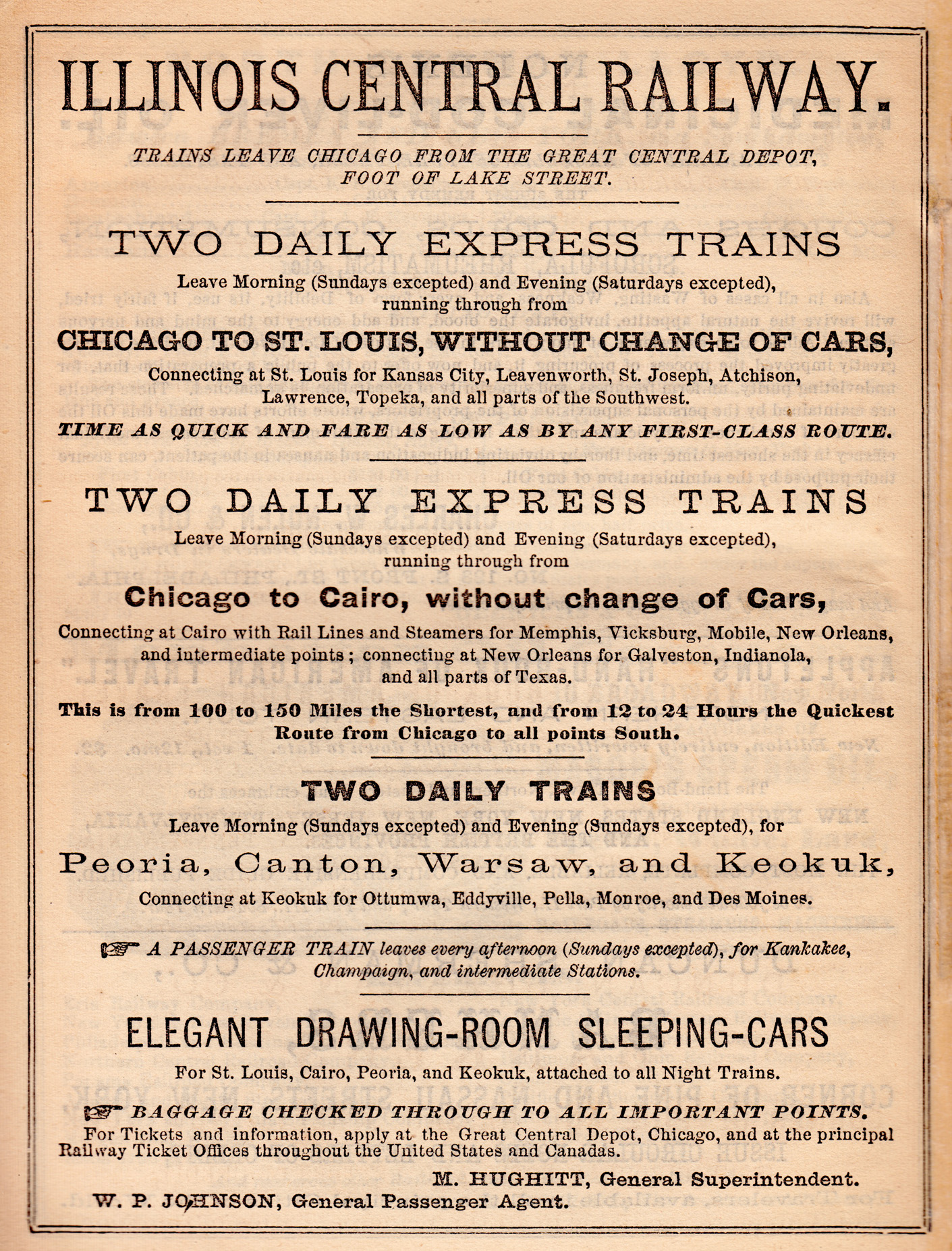|
Red Lick, Mississippi
Red Lick is an unincorporated community located in Jefferson County, Mississippi. Red Lick is approximately southeast of Lorman on Mississippi Highway 552. History Red Lick was established about 1800 and was named for a buffalo and deer lick on a nearby hill of red clay. Most of the early settlers were from South Carolina. The Holly Grove Plantation was established north of Red Lick in the 1830s. The Holly Grove Plantation House is listed on the National Register of Historic Places. In 1990, "to prevent demolition by neglect", the house was dismantled and reconstructed north in Hinds County, Mississippi. The Beech Hill Methodist Church was the first to establish, and also housed a school. The Red Lick Presbyterian church, also known as the "Brick Church", was erected in 1845, and is still standing. A historic plaque is located there. The Natchez, Jackson and Columbus Railroad was completed in 1882, and a station was located in Red Lick. Known as "The Little J", the ... [...More Info...] [...Related Items...] OR: [Wikipedia] [Google] [Baidu] |
Unincorporated Area
An unincorporated area is a region that is not governed by a local municipal corporation. Widespread unincorporated communities and areas are a distinguishing feature of the United States and Canada. Most other countries of the world either have no unincorporated areas at all or these are very rare: typically remote, outlying, sparsely populated or List of uninhabited regions, uninhabited areas. By country Argentina In Argentina, the provinces of Chubut Province, Chubut, Córdoba Province (Argentina), Córdoba, Entre Ríos Province, Entre Ríos, Formosa Province, Formosa, Neuquén Province, Neuquén, Río Negro Province, Río Negro, San Luis Province, San Luis, Santa Cruz Province, Argentina, Santa Cruz, Santiago del Estero Province, Santiago del Estero, Tierra del Fuego Province, Argentina, Tierra del Fuego, and Tucumán Province, Tucumán have areas that are outside any municipality or commune. Australia Unlike many other countries, Australia has only local government in Aus ... [...More Info...] [...Related Items...] OR: [Wikipedia] [Google] [Baidu] |
National Register Of Historic Places Listings In Hinds County, Mississippi
__NOTOC__ This is a list of the National Register of Historic Places listings in Hinds County, Mississippi. This is intended to be a complete list of the properties and districts on the National Register of Historic Places in Hinds County, Mississippi, United States. Latitude and longitude coordinates are provided for many National Register properties and districts; these locations may be seen together in a map. There are 117 properties and districts listed on the National Register in the county, including 5 National Historic Landmarks. Another 4 properties were once listed but have been removed. Current listings Former listings See also * List of National Historic Landmarks in Mississippi * National Register of Historic Places listings in Mississippi References {{Hinds County, Mississippi Hinds County Hinds County is a county locate ... [...More Info...] [...Related Items...] OR: [Wikipedia] [Google] [Baidu] |
Unincorporated Communities In Jefferson County, Mississippi
Unincorporated may refer to: * Unincorporated area, land not governed by a local municipality * Unincorporated entity, a type of organization * Unincorporated territories of the United States, territories under U.S. jurisdiction, to which Congress has determined that only select parts of the U.S. Constitution apply * Unincorporated association Unincorporated associations are one vehicle for people to cooperate towards a common goal. The range of possible unincorporated associations is nearly limitless, but typical examples are: :* An amateur football team who agree to hire a pitch onc ..., also known as voluntary association, groups organized to accomplish a purpose * ''Unincorporated'' (album), a 2001 album by Earl Harvin Trio {{disambig ... [...More Info...] [...Related Items...] OR: [Wikipedia] [Google] [Baidu] |
Gwynedd
Gwynedd (; ) is a Local government in Wales#Principal areas, county and preserved county (latter with differing boundaries; includes the Isle of Anglesey) in the North West Wales, north-west of Wales. It shares borders with Powys, Conwy County Borough, Denbighshire, Anglesey over the Menai Strait, and Ceredigion over the River Dyfi. The scenic Llŷn Peninsula and most of Snowdonia National Park are in Gwynedd. Bangor, Gwynedd, Bangor is the home of Bangor University. As a Administrative divisions of Wales, local government area, it is the second largest in Wales in terms of land area and also one of the most sparsely populated. A majority of the population is Welsh language, Welsh-speaking. ''Gwynedd'' also refers to being one of the preserved counties of Wales, covering the two local government areas of Gwynedd and Anglesey. Named after the old Kingdom of Gwynedd, both culturally and historically, ''Gwynedd'' can also be used for most of North Wales, such as the area that was p ... [...More Info...] [...Related Items...] OR: [Wikipedia] [Google] [Baidu] |
Porthmadog
Porthmadog (; ), originally Portmadoc until 1974 and locally as "Port", is a Welsh coastal town and community in the Eifionydd area of Gwynedd and the historic county of Caernarfonshire. It lies east of Criccieth, south-west of Blaenau Ffestiniog, north of Dolgellau and south of Caernarfon. The community population of 4,185 in the 2011 census was put at 4,134 in 2019. It grew in the 19th century as a port for local slate, but as the trade declined, it continued as a shopping and tourism centre, being close to Snowdonia National Park and the Ffestiniog Railway. The 1987 National Eisteddfod was held there. It includes nearby Borth-y-Gest, Morfa Bychan and Tremadog. History Porthmadog came about after William Madocks built a sea wall, the ''Cob'', in 1808–1811 to reclaim much of Traeth Mawr from the sea for farming use. Diversion of the Afon Glaslyn caused it to scour out a new natural harbour deep enough for small ocean-going sailing ships,John Dobson and Roy Wood ... [...More Info...] [...Related Items...] OR: [Wikipedia] [Google] [Baidu] |
Red Lick Records
Red is the color at the long wavelength end of the visible spectrum of light, next to orange and opposite violet. It has a dominant wavelength of approximately 625–740 nanometres. It is a primary color in the RGB color model and a secondary color (made from magenta and yellow) in the CMYK color model, and is the complementary color of cyan. Reds range from the brilliant yellow-tinged scarlet and vermillion to bluish-red crimson, and vary in shade from the pale red pink to the dark red burgundy. Red pigment made from ochre was one of the first colors used in prehistoric art. The Ancient Egyptians and Mayans colored their faces red in ceremonies; Roman Empire, Roman generals had their bodies colored red to celebrate victories. It was also an important color in China, where it was used to color early pottery and later the gates and walls of palaces. In the Renaissance, the brilliant red costumes for the nobility and wealthy were dyed with kermes (dye), kermes and cochineal. Th ... [...More Info...] [...Related Items...] OR: [Wikipedia] [Google] [Baidu] |
Illinois Central Railroad
The Illinois Central Railroad , sometimes called the Main Line of Mid-America, was a railroad in the Central United States, with its primary routes connecting Chicago, Illinois, with New Orleans, Louisiana, and Mobile, Alabama. A line also connected Chicago with Sioux City, Iowa (1870). There was a significant branch to Omaha, Nebraska (1899), west of Fort Dodge, Iowa, and another branch reaching Sioux Falls, South Dakota (1877), starting from Cherokee, Iowa. The Sioux Falls branch has been abandoned in its entirety. The Canadian National Railway acquired control of the IC in 1998, and merged its operations in 1999. Illinois Central continues to exist as a paper railroad. History The IC was one of the oldest Class I railroads in the United States. The company was incorporated by the Illinois General Assembly on January 16, 1836. Within a few months Rep. Zadok Casey (D-Illinois) introduced a bill in the U.S. House of Representatives authorizing a land grant to the com ... [...More Info...] [...Related Items...] OR: [Wikipedia] [Google] [Baidu] |
Natchez, Mississippi
Natchez ( ) is the county seat of and only city in Adams County, Mississippi, United States. Natchez has a total population of 14,520 (as of the 2020 census). Located on the Mississippi River across from Vidalia in Concordia Parish, Louisiana, Natchez was a prominent city in the antebellum years, a center of cotton planters and Mississippi River trade. Natchez is some southwest of Jackson, the capital of Mississippi, which is located near the center of the state. It is approximately north of Baton Rouge, Louisiana, located on the lower Mississippi River. Natchez is the 25th-largest city in the state. The city was named for the Natchez tribe of Native Americans, who with their ancestors, inhabited much of the area from the 8th century AD through the French colonial period. History Established by French colonists in 1716, Natchez is one of the oldest and most important European settlements in the lower Mississippi River Valley. After the French lost the French and Ind ... [...More Info...] [...Related Items...] OR: [Wikipedia] [Google] [Baidu] |
Jackson, Mississippi
Jackson, officially the City of Jackson, is the Capital city, capital of and the List of municipalities in Mississippi, most populous city in the U.S. state of Mississippi. The city is also one of two county seats of Hinds County, Mississippi, Hinds County, along with Raymond, Mississippi, Raymond. The city had a population of 153,701 at the 2020 census, down from 173,514 at the 2010 census. Jackson's population declined more between 2010 and 2020 (11.42%) than any Major cities in the U.S., major city in the United States. Jackson is the anchor for the Jackson metropolitan area, Mississippi, Jackson metropolitan statistical area, the largest metropolitan area completely within the state. With a 2020 population estimated around 600,000, metropolitan Jackson is home to over one-fifth of Mississippi's population. The city sits on the Pearl River (Mississippi–Louisiana), Pearl River and is located in the greater Jackson Prairie region of Mississippi. Founded in 1821 as the site f ... [...More Info...] [...Related Items...] OR: [Wikipedia] [Google] [Baidu] |
Hinds County, Mississippi
Hinds County is a county located in the U.S. state of Mississippi. With its county seats (Raymond and the state's capital, Jackson), Hinds is the most populous county in Mississippi with a 2020 census population of 227,742 residents. Hinds County is a central part of the Jackson metropolitan statistical area. It is a professional, educational, business and industrial hub in the state. It is bordered on the northwest by the Big Black River and on the east by the Pearl River. It is one county width away from the Yazoo River and the southern border of the Mississippi Delta. In the 19th century, the rural areas of the county were devoted to cotton plantations worked by enslaved African Americans and depended on agriculture well into the 20th century; from 1877 to 1950, this county had 22 lynchings, the highest number in the state. Mississippi has the highest total number of lynchings of any state. * Clinton Public School District * Hinds County School District (Raymond) * ... [...More Info...] [...Related Items...] OR: [Wikipedia] [Google] [Baidu] |
Holly Grove Plantation House
Holly Grove Plantation House was built c. 1830 by Noel and Jane Killingsworth near Red Lick, Mississippi, and dismantled and reconstructed to the north in Hinds County, Mississippi, in 1990. The Killingsworths lived there with their children and grandchildren, including Sarah Ellen Grafton. They sent her and their other daughters to Nazareth Academy in Bardstown, Kentucky. History The Plantation house in the Southern United States, house, a mixture of federal and Greek Revival architecture, was originally constructed from a kit manufactured in Cincinnati, the components of which were shipped down the Ohio and Mississippi rivers to Rodney, Mississippi, and transported to Red Lick by wagons along with a crew supplied by the manufacturer, believed to be Hinkle, Guild & Co. The frame of the house, of post-and-beam, mortise-and-tenon construction, includes numerous interchangeable components (indicating manufactured Millwork (building material), millwork), with Roman numeral marki ... [...More Info...] [...Related Items...] OR: [Wikipedia] [Google] [Baidu] |




